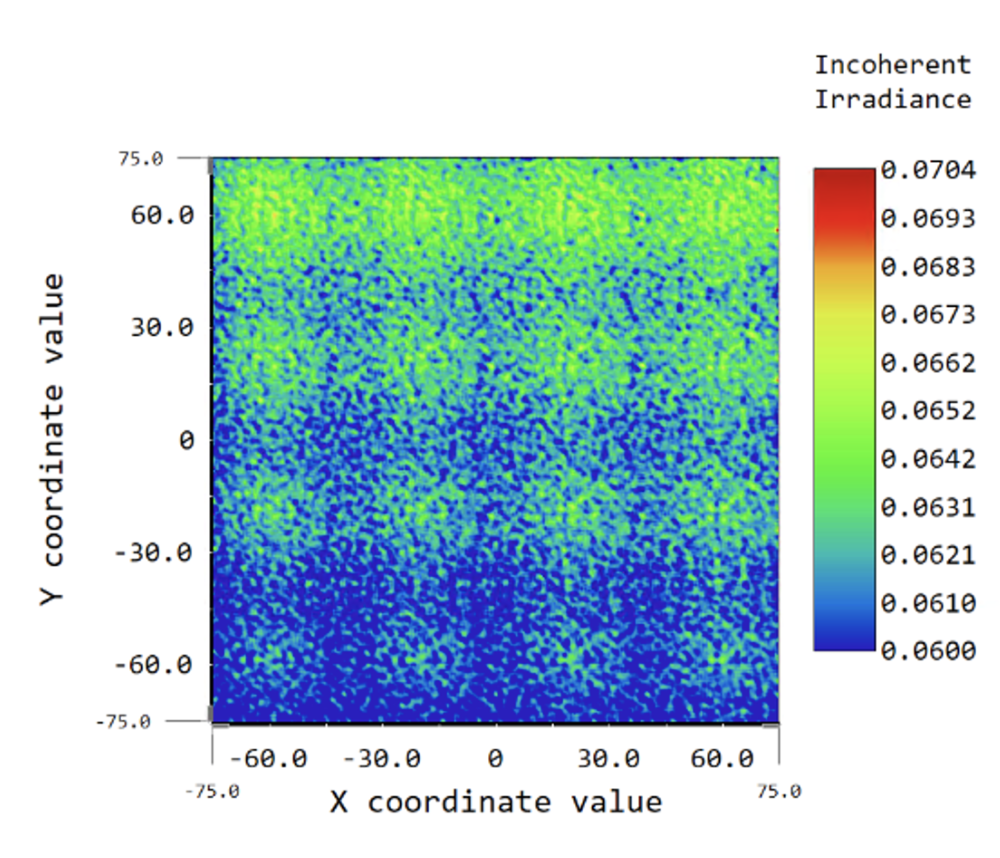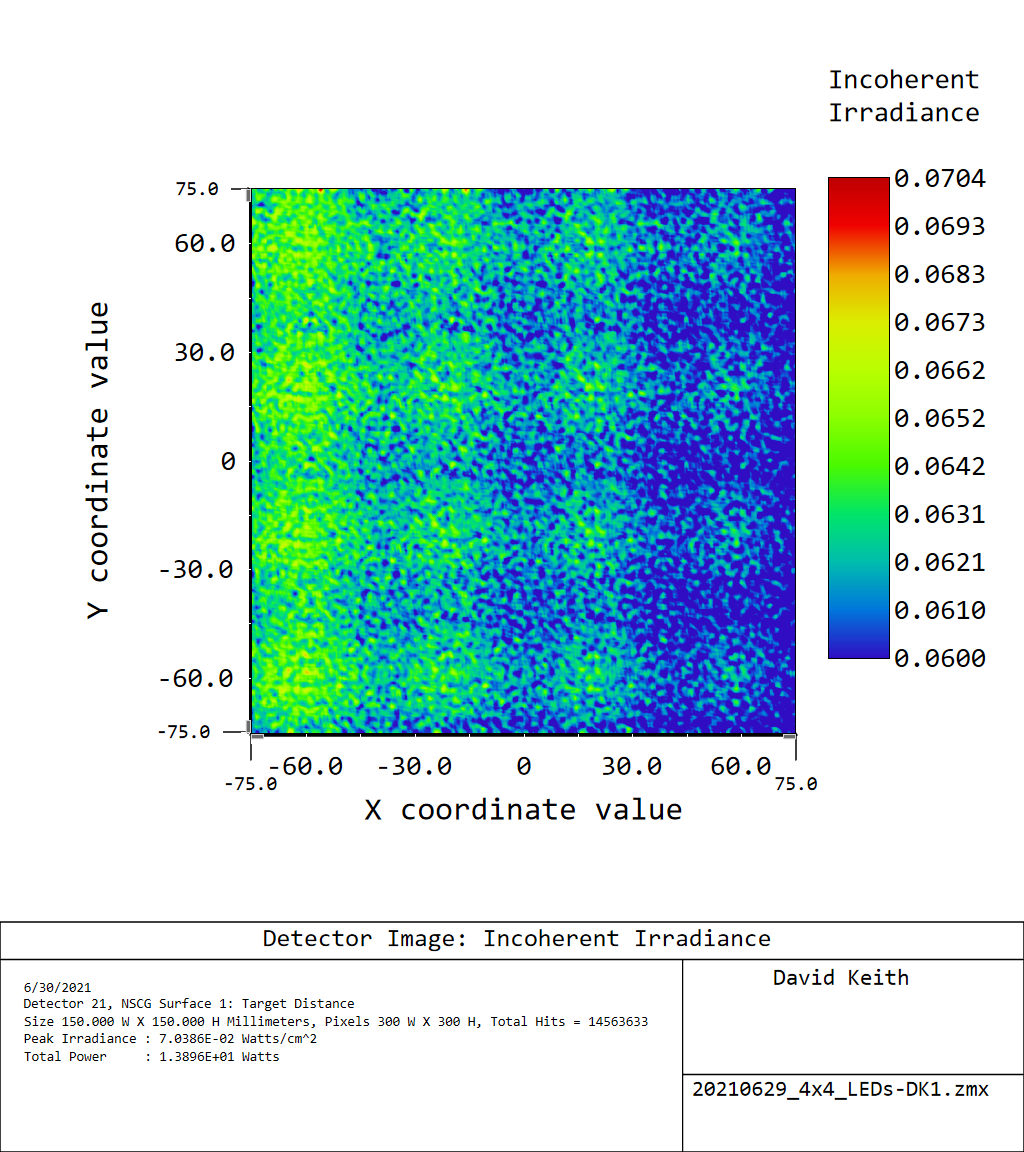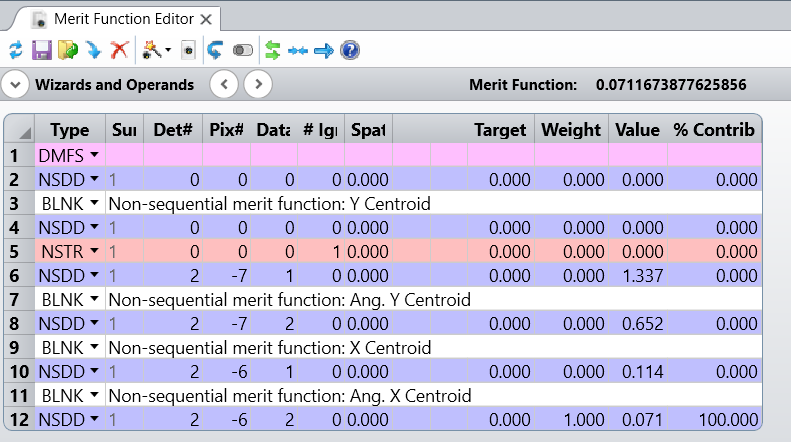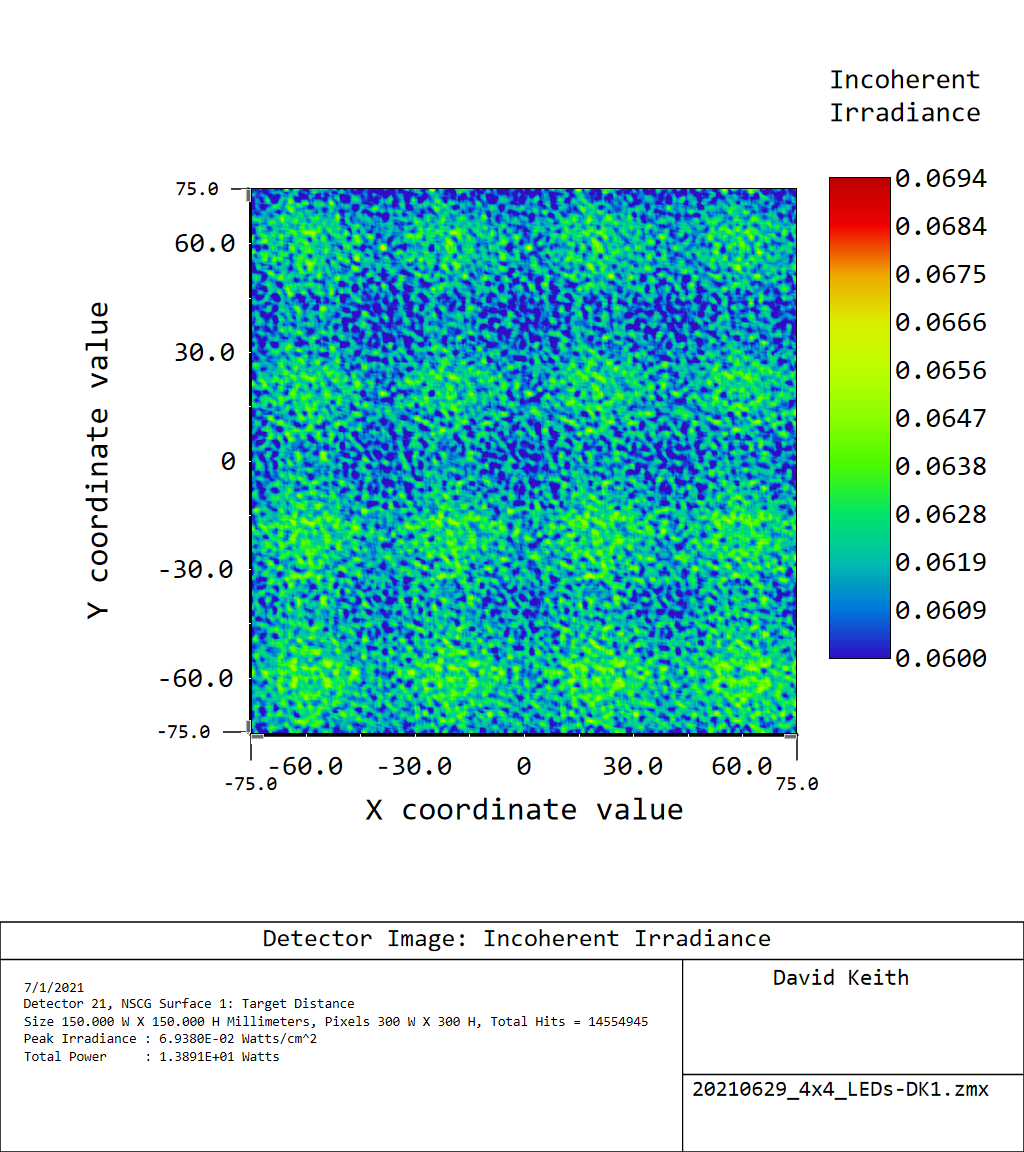I am having a strange issue with a 4x4 array of LEDs using Cree XP-E2 source file placed inside a square mirror tunnel with LEDs on one end and detector on the other.
The issue is that there is a slight gradient on the detector and I can't figure out where it's coming from. ZAR attached.








